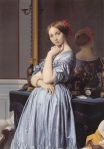I wrote a version of this article for the Health Plus supplement of the Irish Times in 2011. The measurable and beneficial effect of art on the human psyche is extraordinary. I know the sun is shining at the moment but if you fancy a break do pop into an art gallery and get a beauty boost.
‘It was William Dargan, the engineer who constructed Ireland’s first railway line between Dublin City Centre and Kingstown, now Dun Laoghaire, and went on to lay more than eight hundred miles of rail crisscrossing the country, who made arrangements for a substantial display of artwork to be included in the Great Dublin Exhibition of 1853. This display was located on Leinster Lawn, a public space facing Merrion Square in Dublin, and such was the enthusiasm of the visiting crowds that the authorities undertook to house a permanent public art collection in a custom built gallery on that very spot as a lasting monument of gratitude to Dargan. A statue of the visionary man who brought public art to Dublin stands in front of this fine building.
So why did our predecessors demonstrate such enthusiasm for art, and why do natives and visitors alike continue to flock to our many art galleries? The answer lies in the positive affect that looking at an attractive work of art has on our sense of well-being. In fact sometimes the beauty we encounter in art can be overwhelming. A well recognised condition can leave viewers of art so overcome by the beauty of what lies before them that they may swoon or experience a sensation of weakness and dizziness. It even has a scientific name.
Stendhal Syndrome, a psychosomatic illness that causes dizziness, fainting, rapid heartbeat, confusion and, in some recorded cases, hallucinations takes its name from the 19th-century French novelist and art critic Stendhal (aka Henri-Marie Beyle), who documentd this phenomenon after his 1817 visit to the beautiful Basilica of Santa Croce in Florence. He wrote about it in his book Naples and Florence: A Journey from Milan to Reggio and describes it thus:
“As I emerged from the porch of Santa Croce, I was seized with a fierce palpitation of the heart (that same symptom which, in Berlin, is referred to as an attack of the nerves); the well-spring of life was dried up within me, and I walked in constant fear of falling to the ground”.
The syndrome was given his name as recently as 1979 when Italian psychiatrist Graziella Magherini observed and documented more than one hundred similar cases among visitors to the magnificent galleries of Florence.
In 2011, in a series of brain-mapping experiments, Semir Zeki, Professor of Neurobiology and Neuroaesthetics at University College London concluded that viewing beautiful art can give us as much pleasure as being in love. When his research subjects were shown artworks that they considered beautiful, blood flow to the relevant area of the brain increased by as much as ten per cent – the same effect as is observed when a subject gazes at a loved one.
By studying MRI scans it was evident that exposure to beautiful art triggers a surge of the positive neurotransmitter dopamine into the medial orbito-frontal cortex of the brain and this leads to feelings of intense pleasure.
Of course beauty is subjective but paintings by the English romantic painter John Constable (his Hay Wain is above), the French neoclassical painter Jean-Auguste-Dominique Ingres (his portrait of Countess D’Haussonville is below) and Italian Baroque artist Guido Reni produced the most powerful ‘pleasure’ responses among subjects.
These findings have significant implications for government policy. At a time of economic hardship when arts funding is constantly under threat and the need for public art is relentlessly questioned it is encouraging to learn that the availability of such beauty to the citizens of Ireland and the wider world has a positive and proven beneficial effect on our psyche.’  First published in the Irish Times Health Plus on November 22, 2011
First published in the Irish Times Health Plus on November 22, 2011

